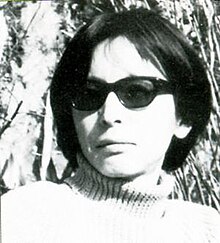파타레 프라부
Pathare Prabhu파타레 프라부(Pathare Prabhu)는 뭄바이(옛날 봄베이)시에 있는 힌두교 공동체 중 하나이다.
소개
이 공동체의 구성원들은 뭄바이의 원래 정착민들 중 하나이다 - 그들은 13세기 동안 구자라트 (Saurashtra)에서 이주했다. 그들은 대부분 뭄바이 시와 교외에 산다. 그들은 보통 마라티를 말한다. 그러나 구세대들은 구자라티와 마라티를 합친 파라바이 사투리를 구사했다. 파타레 쁘라부스는 태양과 달의 후손이라고 여겨진다. 그들은 크샤트리야 바르나에 배치되어 있다.[1][2]
파타레 프라브후스와 찬드라세니야 카야스타 프라브후스(CKPs)는 자매 공동체로, 둘 다 '프라부 카스트'에 속한다.[3] 그러나, Pathare Prabhu는 힌두교의 스마르타 전통을 따랐고, CKP는 최초의 샹카라차리아인 Adi Shankara가 지지하는 Advaita Vedanta 전통을 따랐다.[4]
모든 마하라슈트리아 카스트, CKP와 함께 마하라슈트라(Maharashtra)의 '높은' 또는 '엘리트' 카스트 중 하나로 꼽힌다.[5]
19세기에 파타레 프라부(Pathare Prabhu)는 봄베이를 '데스(Desh)'라고 지칭할 것이다. 이들은 기르가온, 마자가온, 파렐, 마힘, 월리의 5대 일차 집산지였던 '크샤트리야 연합 클럽'을 결성하였다. 1887년 우파나야나(스프레드 의식 또는 문자)에서 노래할 '나인'(댄서)의 초청과 결혼 축하 행사를 중단하기로 한 '데스' 차원에서 회의를 열었다. 역사학자들은 2년 후 이 규칙을 어긴 파타레 프라부 회원이 사회적으로 소외된 사건을 인용한다. 그는 명예 훼손으로 고소했지만 영국 법원은 그를 상대로 판결했다.[6]
저명인사
- Moroba Kanhoba – 19세기 작가 겸 사회 개혁가(여성 인권 옹호자), 유명한 마라티 소설 "가시람 코트왈"의 작가. 그의 공개적인 과부와의 결혼은 결혼 1년 만에 부부가 숨진 채 발견된 후 비극으로 끝났다.[7][8]
- 시브카르 바푸지 탈파드 – 1895년 봄베이에서[9] 무인 중형 항공기를 조종한 것으로 유명한 베딕 스콜라
- Attmaram Sadashiv Jayakar - 저명한 동물학자, 의사, 자연주의자 및 탐험가. 오만의 동물과 의학 조사에 대한 과학적인 연구로 가장 잘 알려져 있다. 그는 아라비트가스 자야카리, 히포캄푸스 자야카리, 오만소룡아 자야카리와 같은 알려지지 않은 종들을 묘사했는데, 모두 그의 이름을 따서 이름이 지어졌다. 그는 또한 아랍어의 오만 방언도 공부했다.[10]
- Mahadev Vishwanath Dhurandhar - 인도의 화가와 예술가로 잘 알려져 있다.[11]
- 칸호바 란코다스 키르티카르 - 저명한 식물학자, 외과의사, 마라티 시인.[12]
- Mukund Ramarao Jayakar - 푸네 대학의 제1 부총장.[13]
참고 항목
참조
- ^ K.S. Singh (1998). People of India: A - G., Volume 4. Oxford Univ. Press. p. 2813. ISBN 0195633547.
PATHARE PRABHU One of the original settlers of the Island City of Mumbai, they migrated from Saurashtra in Gujarat during the 13th century. They are distributed only in the Mumbai city and its suburbs in Maharashtra. They are Kshatriya who speak Marathi. However, the people of older generation still speak the Parabhai dialect, which is an admixture of Gujarati and Marathi languages, among themselves.
- ^ Āditya Mehendale. Rare Gems: A Non-vegetarian Gourmet Collection from Maharashtra. Om Books International. p. 79.
The pathare prabhus are believed to be descendents of the King Ashwapati who reigned in Nepal
- ^ Christine E. Dobbin (1972). Urban leadership in Western India: politics and communities in Bombay city, 1840-1885. p. 225.
Not only were the Pathare prabhus aware for the need for self help. In 1876 the members of their sister community, the Chandraseniya Kayasth Prabhus, began to organize themselves.
- ^ K.P.Bahadur, Sukhdev Singh Chib (1981). The Castes, Tribes and Culture of India. ESS Publications. p. 161.
pg 161: The Kayastha Prabhus...The creed mostly accepted by them is that of the advaita school of Shankaracharya, though they also worship Vishnu, Ganapati and other gods. ...Most of the Pathare Prabhus are the followers of smart sect who adopt the teachings of Shankaracharya
- ^ "The American Economic Review - Volume 96, Issues 3-4". Nashville, Tenn. American Economic Association. 2006: 1228.
High castes include all the Brahmin jatis, as well as a few other elite jatis (CKP and Pathare Prabhus).Low castes include formerly untouchable and backward castes (Scheduled Castes, Scheduled Tribes, and Other Backward Castes, as defined by the government of India). Medium castes are drawn mostly from the cultivator jatis, such as the Marathas and the Kunbis, as well as other traditional vocations that were not considered to be ritually impure.
Cite 저널은 필요로 한다.journal=(도움말) - ^ Utsa Patnaik; Terence J. Byres; K. N. Panikkar, eds. (2002). The Making of History: Essays Presented to Irfan Habib (Anthem South Asian Studies). Anthem Press. p. 197.
- ^ Kanupriya; Amar Nath Prasad. Indian Writing in English: Tradition and Modernity.
Moroba Kanhoba Vijaykar's novel Ghashiram Kotwal appeared in 1873. Ghashiram is not an imaginative character of literature.
- ^ Crossing Thresholds: Feminist Essays in Social History. 2007. p. 350.
Perhaps the most highly publicized was the ill-fated marriage of Moroba Kanhoba Vijaykar, one of the earliest members of the Society, in 1870. It resulted in the family's excommunication by his Pathare Prabhu caste, despite reformist support. But most unfortunate was the tragedy that struck before a year was over. The newly-weds were found dead in the neighbouring...
- ^ "A flight over Chowpatty that made history". The Times of India. 18 October 2004. Retrieved 3 February 2015.
Talpade belonged to the Pathare Prabhu community, one of the founder of Mumbai
- ^ 오마니 속담, 올레안데르 프레스, 1987, 1-7페이지
- ^ 프라탑 벨카르(1997년). Pathare Prabuncha Ithasa, Shrividya Prakashan, 456페이지
- ^ 프라탑 벨카르(1997년). Pathare Prabuncha Ithasa, Shrividya Prakashan, 445페이지
- ^ Richard I. Cashman (1975). The Myth of the Lokamanya: Tilak and Mass Politics in Maharashtra. University of California Press. p. 190.
Although more at home in the cosmopolitan center of Bombay, and a member of the Council of the Bombay Presidency Association, the Pathare Prabhu lawyer, Mukund Ramrao Jayakar (1873-1959), expressed the typical response
외부 링크
| 위키미디어 커먼즈에는 파타레 프라부와 관련된 미디어가 있다. |



